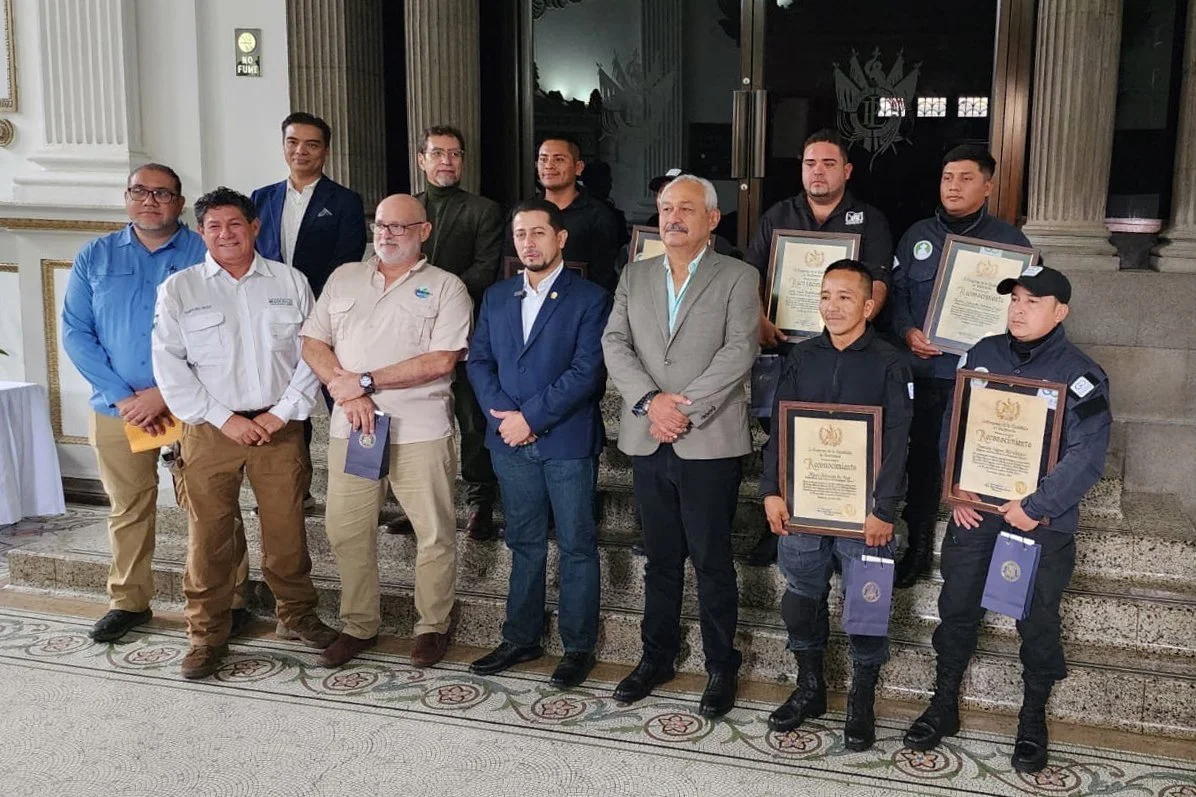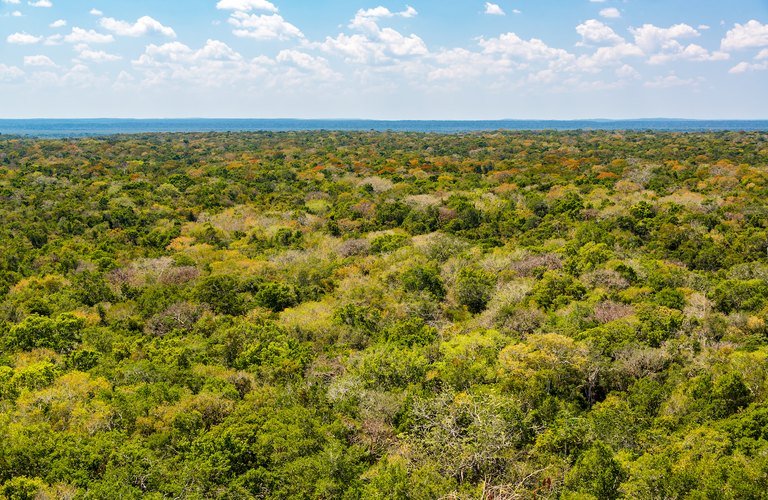Belize Maya Forest Trust’s Annual Progress Report for 2025
Introduction to the Belize Maya Forest Trust
The Belize Maya Forest spans 240,000 acres across the Cayo and Orange Walk Districts of Belize, representing one of the largest remaining expanses of tropical forest in the country. This biodiverse area is home to endangered species such as jaguars, tapirs, white-lipped peccaries, and howler monkeys, as well as countless other plants and animals. Its rich ecosystems, ranging from riverine habitats to mountainous terrain and limestone cenotes, support high biodiversity.
Beyond its ecological significance, the forest holds cultural value, housing ancient Mayan archaeological sites that date back over 3,000 years. It also provides vital ecosystem services, including carbon sequestration, water filtration, and soil conservation, making its preservation a global priority.
A mother jaguar and its young cub trigger one of the camera traps set up in the Belize Maya Forest. The BMFT monitors umbrella species like jaguars, which are apex predators that help maintain the health of the forest. Jaguars also act as an indicator species, meaning their presence is a sign of a healthy forest.
The Belize Maya Forest Trust (BMFT) is dedicated to preserving this critical ecosystem through monitoring, enforcement, community engagement, and sustainable practices. Global Conservation’s support has enabled BMFT to enhance its capabilities through infrastructure upgrades, equipment acquisition, and expanded patrol efforts.
Conservation Goals and Vision:
BMFT’s mission is rooted in sustainability, resilience, and biodiversity protection. Its key goals are:
Fire Prevention and Management: prevent wildfires within the BMF and improve fire strategies by 2025.
Wildlife and Habitat Conservation: maintain stable predator-prey populations and restore forest health (connectivity, biodiversity, and nutrient cycling) by 2027.
Aquatic System Restoration: by 2027, reduce invasive species like the armored catfish and tackle pollution in Cara Blanca Pools and Black Creek.
Infrastructure and Capacity Building: strengthen patrol capacity, surveillance systems, and community engagement programs to ensure long-term sustainability.
The team gets ready to go out on patrol using the ATV’s Global Conservation helped pay for.
Key Threats to the Belize Maya Forest:
Deforestation and Riparian Clearing
Impact: 1/3 of the area affected by agricultural expansion, causing erosion and
water contamination.
Response: Promoted buffer zones and sustainable agriculture practices. Climate Change and Fires
Impact: More droughts, storms, and fires; approx. 35% of the area is fire-prone.
Response: Created firebreaks, implemented controlled burns, and addressed 55 fire incidents in 2024.
Illegal Activities
Hunting and Poaching: Targeted species include deer and peccaries, affecting predator-prey dynamics.
Response: Conducted 306 patrols, resulting in 5 interdictions and license revocations.
Invasive Species
Impact: The armored catfish threatens aquatic systems, reducing native species populations.
Response: Plans for eradication and population reduction by 2027.
Protection Program Overview
The Protection Program is a cornerstone of BMFT’s conservation efforts, aimed at preventing illegal activities, monitoring biodiversity, and strengthening enforcement within the forest.
Key Achievements (2024):
Total Patrols Completed: 306 patrols
Distance Covered: 8088.237 kilometers
Total Patrol Hours Logged: 2,771.07 hours
Incidents Addressed: 55 fire responses and 5 interdictions (Interdictions were not made on BMFT Property, But on neighboring properties).
Flora and Fauna Recorded: 11 plant species and 57 animal species.
Human Activity Detected: 45 cases within BMFT
Patrols per year: 158 (2022–2023), 333 (2023–2024)
Fire Management and Response
Wildfires (2023–2024):
Incidents Addressed: 55 fire responses within BMFT and 20 additional cases in surrounding communities.
Area Impacted:
2023: 1,022 acres lost to fires.
2024: Reduced to approx. 386 acres through improved response strategies.
2025: Reduced to 0 as of May 2025
Key Interventions:
ATVs allowed access to remote areas for fire suppression.
Satellite communicators enabled real-time coordination during emergency responses.
Fuel and logistics support sustained ranger operations during fire events.
Controlled burns and firebreaks were used to prevent fire spread.
Fire Reduction 2023-2025 - Area Impacted:
2023: 1,022 acres lost to fires.
2024: Reduced to approx. 386 acres through improved response strategies.
2025: Reduced to 0 as of May 2025















